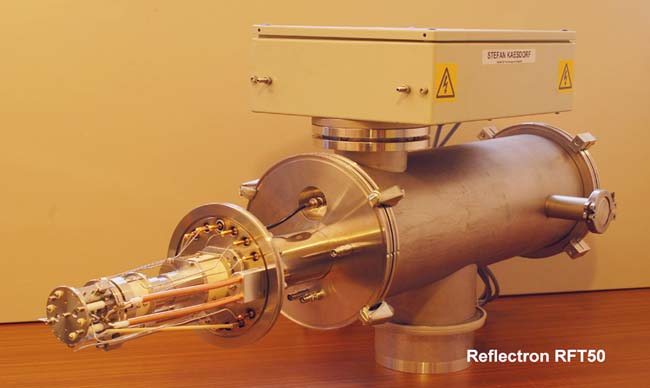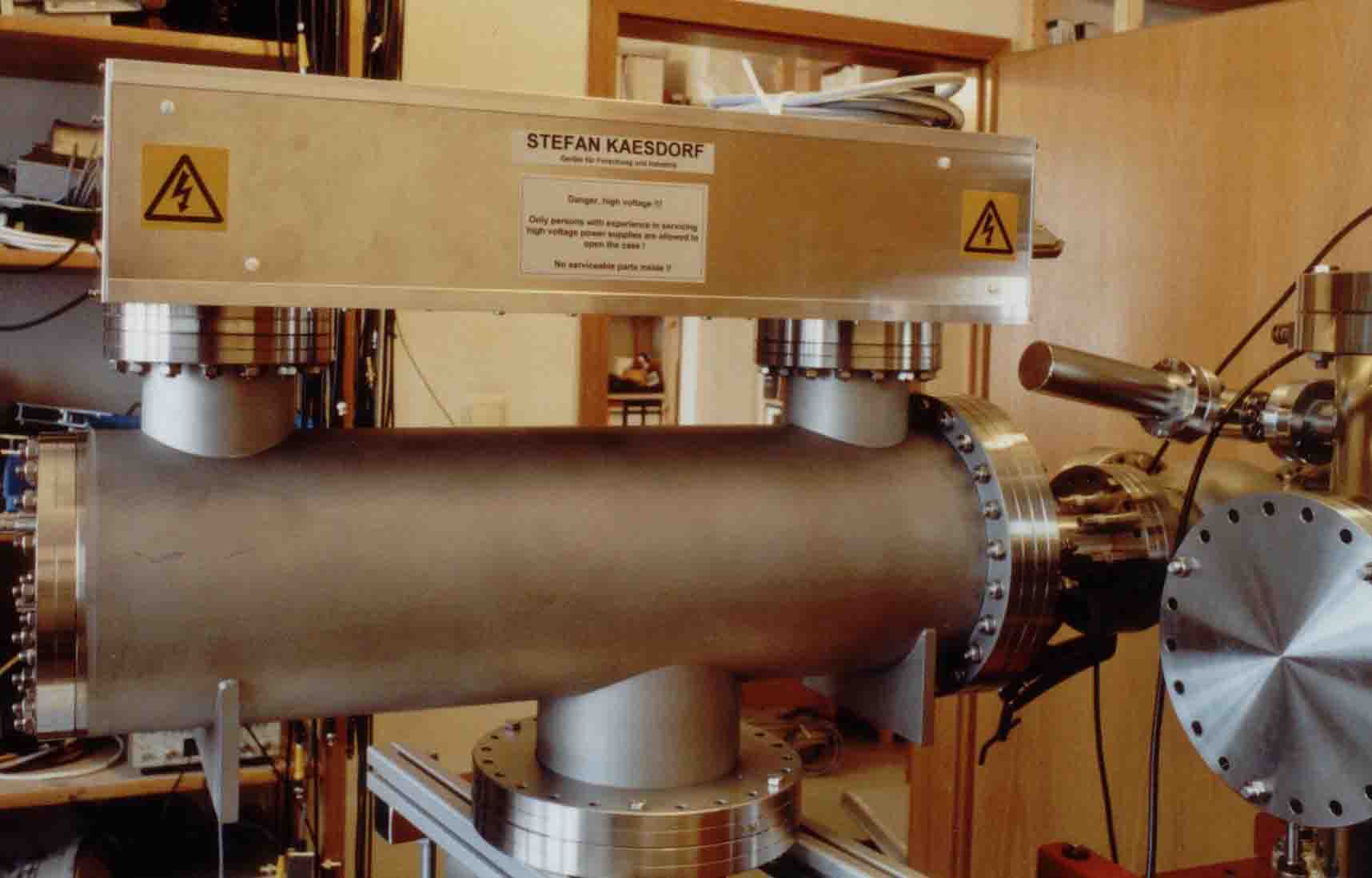|
REFLECTRON RFT50
|

|
RFT50 tof spectrometer with ion source for laser / electron impact ionisation
|
|

|
| Reflectron RFT50 with electron impact
ionisation, ion source mounted on flange opposite to the reflectron
mounting flange, second detector with 20 kV post-acceleration behind
the ion mirror
|
|
|
|
Our
Model RFT50 time-of-flight mass spectrometer is optimized for mass
analysis of ions with mass > 100 000 amu. It uses a detector with 20
kV post-acceleration for efficient heavy-particle detection. The
spectrometer can be equipped with different ion sources depending on
the ionisation scheme employed:
- electron impact
ionization of gas phase species
- laser ionisation,
VUV ionisation,
- laser desorption
and ablation from solid and liquid surfaces and small particles
(aerosols, soot)
- sputtering of
surfaces (SIMS)
|
|
Features:
- two-stage ion
mirror
- large two-stage
channelplate detector (40 mm diameter) with 20 kV post-acceleration for
efficient heavy-particle dtection
- time resolution
T/ΔT up to 10 000 (mass 130)
- electron impact
ionisation with magnetically guided electron beam, sweep rate up to 10
kHz
- MS-Windows based
software package for menu-driven spectrometer operation (electron
impact ionisation)
- UHV-compatible
setup, (O-ring sealed flanges on request)
|
|
Geometrical
Data
- overall length
ca. 950 mm
- (folded)
field-free drift
space ca. 1000 mm
- connection flange
CF150 (8"CF o.d.) or CF100 (6"CF o.d.)
- flight tube
(diameter 200 mm) with
pump flange CF100 (6 "CF o.d.) and pressure gauge flange CF40 (
2.75"CF o.d.)
- distance
connection flange - ionisation zone from 100 to 300 mm
|
|
Options:
- mass analysis of
negative ions
- detector with
extended dynamic range to avoid detector saturation by intense mass
peaks or high sweep rate
- three-stage mcp
detector for low-signal mesurements
- additional
detector behind the ion mirror
- parallel-wire ion
gate to remove unwanted ionic species from the extracted ion beam,
located in the Wiley-McLaren time focus of the two-stage ion source
|
|
Ion
sources available:
for electron impact ionisation, laser ionisation, laser desorption and
laser ablation, aerosol spectroscopy
|
|
Examples for RFT50 ion sources:
|
|
|